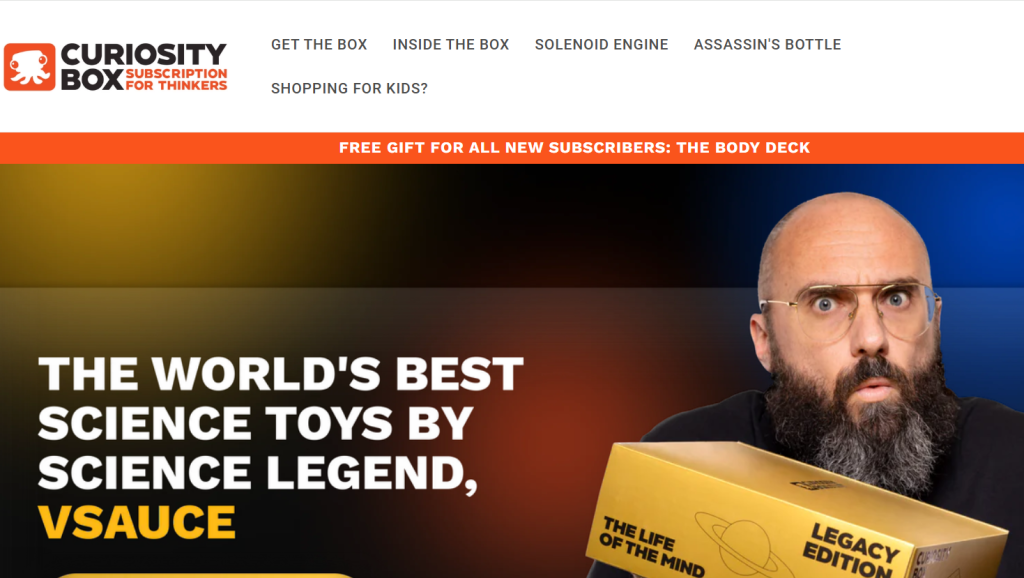
Science is all around us, waiting to be discovered. For children, the world of chemistry and physics can feel like a magical realm filled with mysteries just waiting to be unraveled. What better way to ignite that spark of curiosity than through play? Science toys are more than just fun; they’re gateways to understanding complex concepts in an engaging manner.
Imagine your child mixing colorful liquids in a mini-lab or launching rockets into the sky while learning about propulsion. These experiences not only make science enjoyable but also encourage critical thinking and problem-solving skills. In this guide, we will explore the importance of science education for kids, delve into how toys can enhance their learning experience, recommend the best types for various age groups, provide essential safety tips, and share where you can find these amazing resources. Let’s embark on this exciting journey together!
The Importance of Science Education for Children
Science education lays the foundation for a child’s understanding of the world. It fosters curiosity and encourages exploration. As kids ask questions, they learn to think critically.
Engaging with science helps children grasp fundamental concepts that shape their everyday lives. From understanding weather patterns to recognizing chemical reactions in cooking, these lessons are everywhere.
Moreover, science nurtures creativity and innovation. When children experiment with ideas, they develop resilience by learning from failures and successes alike.
In today’s tech-driven landscape, scientific literacy is essential. Kids equipped with scientific knowledge can better navigate future challenges—whether it be climate change or health crises.
Introducing these concepts early cultivates a lifelong love for learning. Children who appreciate science grow into informed adults ready to contribute meaningfully to society.
Benefits of Using Toys to Teach Science
Using toys to teach science transforms learning into an adventure. Children engage more deeply when they can touch, build, and experiment with tangible objects.
Hands-on experiences stimulate curiosity. When kids manipulate blocks or chemical sets, concepts become vivid. They grasp complex ideas through play rather than rote memorization.
Toys also encourage problem-solving skills. Kids learn to ask questions, make predictions, and troubleshoot failures in a safe environment. This process fosters critical thinking that extends beyond the classroom.
Moreover, collaborative play promotes teamwork and communication. Working together on projects helps children develop social skills while exploring scientific principles.
Integrating fun into education nurtures a lifelong love for learning. When science feels like playtime rather than homework, children are more likely to pursue knowledge in the future.
Best Types of Science Toys for Different Age Groups

Choosing the right science toys is crucial for sparking curiosity at various ages. For toddlers, simple stacking blocks and basic animal figures introduce foundational concepts like balance and categorization.
As children grow into preschoolers, engaging kits that focus on nature or magnetism can captivate their interest. Think of colorful building sets that encourage creativity while subtly teaching physics principles.
For elementary-aged kids, experiment kits are a hit. They offer hands-on experiences with chemistry or robotics, allowing kids to build circuits or create small chemical reactions safely.
Tweens often crave more complex challenges. Science-themed board games can make learning fun while promoting strategic thinking skills. Advanced DIY kits cater to budding engineers interested in coding and mechanics.
Teens benefit from projects that require deeper analytical skills. Robotics competitions or advanced chemistry sets provide stimulating opportunities for real-world applications of scientific knowledge.
Safety Tips for Using Science Toys
Safety should always come first when it comes to science toys. Before introducing new toys, read the labels carefully. Age recommendations are there for a reason and shouldn’t be overlooked.
Supervision is key during playtime, especially with younger children. Keep an eye on them while they explore different experiments or activities.
Make sure your workspace is tidy and free of hazards. Set up areas where kids can safely conduct their experiments without distractions.
It’s essential to use materials properly. Many science kits include chemicals or small parts that can pose risks if misused.
Encourage children to ask questions about safety procedures as they experiment. This fosters a sense of responsibility and awareness around potential dangers in scientific exploration.
Educate kids about proper storage after playtime to avoid accidents later on. Keeping everything organized not only enhances safety but also promotes good habits for future learning adventures.
Our Recommendation: Buy Them From “The Curiosity Box” Website

When it comes to sourcing the best science toys, look no further than “The Curiosity Box” website. This platform offers a wide range of innovative and educational toys that cater to various age groups and interests. Each product is carefully selected to inspire curiosity and foster a love for science in young minds.
Shopping at The Curiosity Box not only ensures quality but also provides a diverse selection that makes learning fun. From chemistry kits to physics experiments, there’s something for every budding scientist. Their easy-to-navigate site allows you to find the perfect toy based on your child’s age or specific scientific interest.
Investing in these science toys can make all the difference in your child’s education journey. Give them the tools they need to explore, experiment, and ignite their passion for discovery today!



